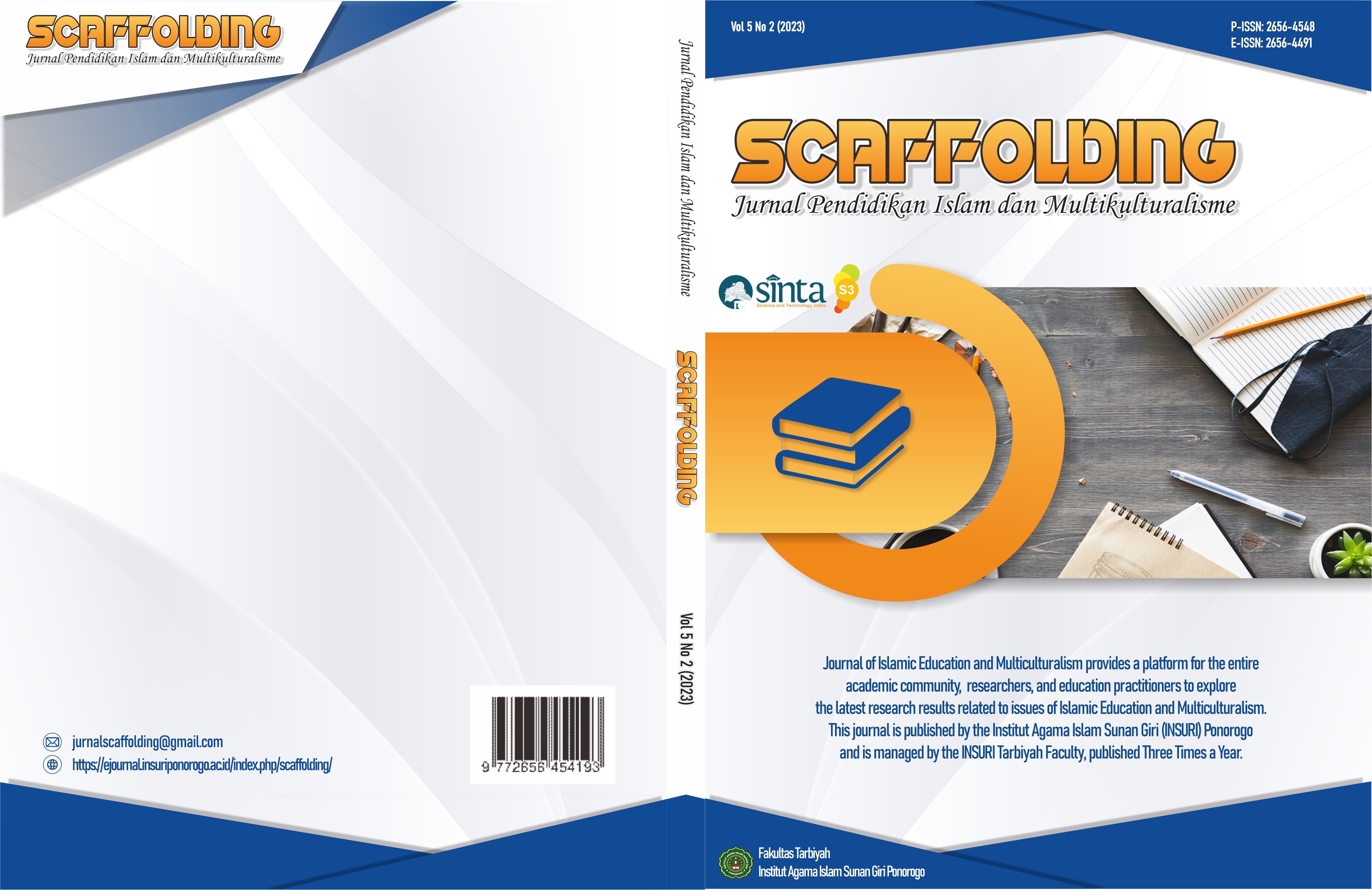The Effect of the 5E Learning Cycle Model on Student Learning Outcomes in Islamic Elementary School
DOI:
https://doi.org/10.37680/scaffolding.v5i2.3033Keywords:
Learning model, 5E Learning Cycle, Learning outcomes, MI Nurul IslamAbstract
This study aims to determine the effect of the 5E learning cycle model on student learning outcomes in grade IV, especially on the material life cycle of living things. The effect of this study is shown by the difference in the average student learning outcomes of the experimental class and the control class. This research is quantitative research, with a quasi-experimental design with a posttest-only control design. The population in this study were all fourth-grade students at MI Nurul Islam, a total of 109 children. The sampling technique in this study used the Simple Random Sampling technique. It is said to be simple (simple) because the collection of sample members is done randomly without regard to the strata in the population. The sample in this study was class IVA which consisted of 28 students as the experimental class, and class IVD which consisted of 27 students as the control class. In data collection techniques, researchers used documentation, observations, and tests. In this study, researchers obtained primary data by means of interviews, observations, and tests. Meanwhile, researchers obtained secondary data from several relevant journals, books, and previous research. The data analysis technique used is to test (independent t-test). Based on the results of the t-test (independent t-test), the results obtained were Sig. (2-tailed) has a value of 0.000 <0.05, which means that there is an influence between the two variables. And the correlation/relationship (R) value is 0.875. From this output, the coefficient of determination (R Square) is 76.6%. This shows that the Learning Cycle 5E learning model influences student learning outcomes by contributing 76.6%, and the rest is influenced by other variables.
Downloads
Published
How to Cite
Issue
Section
License
Authors who publish with this journal agree to the following terms:
Authors retain copyright and grant the journal right of first publication with the work simultaneously licensed under a Creative Commons Attribution-NonCommercial 4.0 International License that allows others to share the work with an acknowledgement of the work's authorship and initial publication in this journal.
Authors are able to enter into separate, additional contractual arrangements for the non-exclusive distribution of the journal's published version of the work (e.g., post it to an institutional repository or publish it in a book), with an acknowledgement of its initial publication in this journal.
Authors are permitted and encouraged to post their work online (e.g., in institutional repositories or on their website) prior to and during the submission process, as it can lead to productive exchanges, as well as earlier and greater citation of published work.



